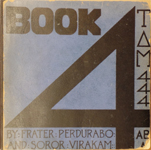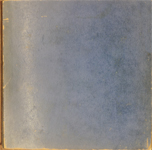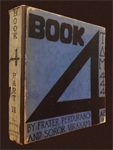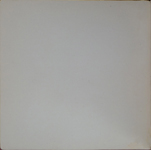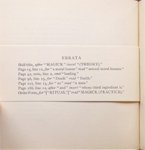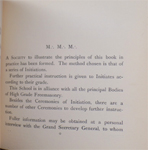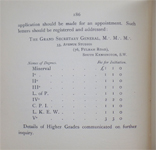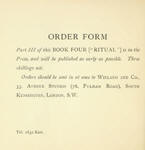100th
MP

|
THE
100th
MONKEY
PRESS |
|
|
|
Limited Editions by Aleister Crowley & Victor B. Neuburg |
|
Bibliographies |
|
Download Texts
»
Aleister
Crowley
WANTED !!NEW!!
|
|
BOOK 4 - PART II |
|
Image Thumbnails |
||||||||||||||||||||||||||||||||||||||||||||||||||||||||||||||||||||||||||||||||||||||||||||||||||||||||||||||||||||||||||||||||||||||||||||||||||||||||||||||||||||||||||||||||||||||||||||||||||||||||||||||||
|
Title: |
Book 4 (Part II). |
|
||||||||||||||||||||||||||||||||||||||||||||||||||||||||||||||||||||||||||||||||||||||||||||||||||||||||||||||||||||||||||||||||||||||||||||||||||||||||||||||||||||||||||||||||||||||||||||||||||||||||||||||
|
Variations: |
|
|||||||||||||||||||||||||||||||||||||||||||||||||||||||||||||||||||||||||||||||||||||||||||||||||||||||||||||||||||||||||||||||||||||||||||||||||||||||||||||||||||||||||||||||||||||||||||||||||||||||||||||||
|
Publisher: |
Wieland and Co., 33 Avenue Studios, 76 Fulham Road, London.3 |
|||||||||||||||||||||||||||||||||||||||||||||||||||||||||||||||||||||||||||||||||||||||||||||||||||||||||||||||||||||||||||||||||||||||||||||||||||||||||||||||||||||||||||||||||||||||||||||||||||||||||||||||
|
Printer: |
||||||||||||||||||||||||||||||||||||||||||||||||||||||||||||||||||||||||||||||||||||||||||||||||||||||||||||||||||||||||||||||||||||||||||||||||||||||||||||||||||||||||||||||||||||||||||||||||||||||||||||||||
|
Published At: |
London.1 |
|||||||||||||||||||||||||||||||||||||||||||||||||||||||||||||||||||||||||||||||||||||||||||||||||||||||||||||||||||||||||||||||||||||||||||||||||||||||||||||||||||||||||||||||||||||||||||||||||||||||||||||||
|
Date: |
circa May 1913. |
|||||||||||||||||||||||||||||||||||||||||||||||||||||||||||||||||||||||||||||||||||||||||||||||||||||||||||||||||||||||||||||||||||||||||||||||||||||||||||||||||||||||||||||||||||||||||||||||||||||||||||||||
|
Edition: |
1st Edition. |
|||||||||||||||||||||||||||||||||||||||||||||||||||||||||||||||||||||||||||||||||||||||||||||||||||||||||||||||||||||||||||||||||||||||||||||||||||||||||||||||||||||||||||||||||||||||||||||||||||||||||||||||
|
Pages: |
viii + 186.1 |
|||||||||||||||||||||||||||||||||||||||||||||||||||||||||||||||||||||||||||||||||||||||||||||||||||||||||||||||||||||||||||||||||||||||||||||||||||||||||||||||||||||||||||||||||||||||||||||||||||||||||||||||
|
Price: |
Priced at 4 tanners or 2 shillings net.3 |
|||||||||||||||||||||||||||||||||||||||||||||||||||||||||||||||||||||||||||||||||||||||||||||||||||||||||||||||||||||||||||||||||||||||||||||||||||||||||||||||||||||||||||||||||||||||||||||||||||||||||||||||
|
Remarks: |
Published under the pseudonym of Frater Perdurabo (Aleister Crowley) and Soror Virakam (Mary d’Este-Sturges). Has an errata sheet tipped in facing page viii that lists 7 corrections.1 Some American copies have a slip inserted that reads in part: “Since the writing of this book, FRATER PERDURABO has attained to a Grade which makes it impossible for any but the highest Initiates to approach Him personally. The private instruction which He formerly offered will now be given, freely as before, by His chosen representative, FRATER ACHAD, who may be addressed care of THE COLLEGIUM AD SPIRITUM SANCTUM, Post Office Box 141, CHICAGO, ILL.”5 |
|||||||||||||||||||||||||||||||||||||||||||||||||||||||||||||||||||||||||||||||||||||||||||||||||||||||||||||||||||||||||||||||||||||||||||||||||||||||||||||||||||||||||||||||||||||||||||||||||||||||||||||||
|
Pagination:2 |
|
|||||||||||||||||||||||||||||||||||||||||||||||||||||||||||||||||||||||||||||||||||||||||||||||||||||||||||||||||||||||||||||||||||||||||||||||||||||||||||||||||||||||||||||||||||||||||||||||||||||||||||||||
|
Contents: |
|
|||||||||||||||||||||||||||||||||||||||||||||||||||||||||||||||||||||||||||||||||||||||||||||||||||||||||||||||||||||||||||||||||||||||||||||||||||||||||||||||||||||||||||||||||||||||||||||||||||||||||||||||
|
Author’s Working Versions: |
|
|||||||||||||||||||||||||||||||||||||||||||||||||||||||||||||||||||||||||||||||||||||||||||||||||||||||||||||||||||||||||||||||||||||||||||||||||||||||||||||||||||||||||||||||||||||||||||||||||||||||||||||||
|
Other Known Editions: |
||||||||||||||||||||||||||||||||||||||||||||||||||||||||||||||||||||||||||||||||||||||||||||||||||||||||||||||||||||||||||||||||||||||||||||||||||||||||||||||||||||||||||||||||||||||||||||||||||||||||||||||||
|
Bibliographic Sources: |
|
|||||||||||||||||||||||||||||||||||||||||||||||||||||||||||||||||||||||||||||||||||||||||||||||||||||||||||||||||||||||||||||||||||||||||||||||||||||||||||||||||||||||||||||||||||||||||||||||||||||||||||||||
|
Comments by Aleister Crowley: |
She was very unsatisfactory as a clairvoyant; she resented these precautions. She was a quick-tempered and impulsive woman, always eager to act with reckless enthusiasm. My cold scepticism no doubt prevented her from doing her best. Ab-ul-Diz himself constantly demanded that I should show “faith” and warned me that I was wrecking my chances by my attitude. I prevailed upon him, however, to give adequate proof of his existence and his claim to speak with authority. The main purport of his message was to instruct me to write a book on my system of mysticism and Magick, to be called Book Four, and told me that by means of this book, I should prevail against public neglect. It saw no objection to writing such a book; on quite rational grounds, it was a proper course of action, I therefore agreed to do so. But Ab-ul-Diz was determined to dictate the conditions in which the book should be written; and this was a difficult matter. He wanted us to travel to an appropriate place. On this point I was not wholly satisfied with the result of my cross-examination. I know now that I was much to blame throughout. I was not honest either with him, myself or Virakam. I allowed material considerations to influence me, and I clung—oh triple fool!—to my sentimental obligations towards Laylah. We finally decided to do what he asked, though part of my objection was founded on his refusal to give us absolutely definite instructions. However, we crossed the passes in a sleigh to Chiavenna, whence we took the train to Milan. In this city we had a final conversation with Ab-ul-Diz. I had exhausted his patience, as he mine, and he told us that he would not visit us any more. He gave us his final instructions. We were to go to Rome and beyond Rome, though he refused to name the exact spot. We were to take a villa and there write Book Four. — The Confessions of Aleister Crowley. New York, NY. Hill and Wang, 1969. Pages 677-678. ______________________________
The idea was as follows. I was to dictate; Virakam to transcribe, and if at any point there appeared the slightest obscurity—obscurity from the point of view of the entirely ignorant and not particularly intelligent reader; in a word, the average lower-class man in the street—I was to recast my thoughts in plainer language. By this means we hoped to write a book well within the compass of the understanding of even the simplest- minded seeker after spiritual enlightenment. Part One of Book Four expounds the principles and practice of mysticism in simple scientific terms stripped of all sectarian accretion, superstitious enthusiasms or other extraneous matter. It proved completely successful in this sense. Part Two deals with the principles and practice of Magick. I explained the real meaning and modus operandi of all the apparatus and technique of Magick. Here, however, I partially failed. I was stupid enough to assume that my readers were already acquainted with the chief classics of Magick. I consequently described each Weapon, explained it and gave instructions for its use, without making it clear why it should be necessary at all. Part Two is therefore an wholly admirable treatise only for one who has already mastered the groundwork and gained some experience of the practice of the art. The number 4 being the formula of the book, it was of course to consist of four parts. I carried out this idea by expressing the nature of the Tetrad, not only by the name and plan of the book, but by issuing it in the shape of a square 4 inches by 4, and pricing each part as a function of 4. Part One was published at 4 groats, Part Two at 4 tanners, Part Three was to cost 3 “Lloyd George groats” (at this time the demagogue was offering the workman ninepence for fourpence, by means of an insurance swindle intended to enslave him more completely than ever). Part Four, 4 shillings. Part Three was to deal with the practice of Magick, and Part Four, of The Book of the Law with its history and the Comment; the volume, in fact indicated in the Book itself, chapter III, verse 39. — The Confessions of Aleister Crowley. New York, NY. Hill and Wang, 1969. Page 680. |
|||||||||||||||||||||||||||||||||||||||||||||||||||||||||||||||||||||||||||||||||||||||||||||||||||||||||||||||||||||||||||||||||||||||||||||||||||||||||||||||||||||||||||||||||||||||||||||||||||||||||||||||
|
Reviews: |
Herein are described the implements of the Magician, their magical significance, the furniture of the temple wherein he works, and the modus operandi of one who would be called Adept. Although we have here much sound information of a magical nature which should prove of the greatest value to those who chose the Path of Ceremonial Magick as the means of attainment best suited to their temperament, there are not lacking incongruities whose absurdity is only too manifest. For instance, we are told that the Magick Cup is “full of bitterness, and of blood, and of intoxication”: yet in another place it is asserted that the same cup is “the heavenly food of the Magus.” On p. 39 we read, printed in big black type, that “any will but to give up the self to the Beloved is Black Magic,” and again on p. 81 that “the soul must descend into all falsity in order to attain All-Truth.” We are further informed, regarding our latent tendencies that “every one must be awakened, and every one must be destroyed.” One would have thought it quite sufficient to be a spectator of the horrors of hell without taking especial pains to materialize them in the magic workshop of the mind. It seems unnecessary, not to say dangerous, to invoke demons, which, after all, must be destroyed. On p. 100 we read that “The mind must be broken up into a form of insanity before it can be transcended.” This also seems unnecessarily severe, though a likely enough sequel to the prelude of invoking the dog-faced demons of the Abyss. While quite agreeing that the few who will survive the ordeal of this method of initiation will be in every way exceptional men, it is doubtful whether one who has thus survived is justified in inviting others to follow in his footsteps or even in thinking that the method whereby he attained may be employed safely by any one but himself. For one's man's profit is another man's loss. Be that as it may, the intelligent perusal of this work will enable the student to penetrate the mists that shrouded the writings of the mediæval magicians. He will certainly discover that the most sublime truths are hidden beneath their obscure symbolism. Also the most abstruse problems are, on the whole, dealt with in an exceptionally clear manner, and for this reason alone the book should appeal to a large number of persons. Clear language and transcendental experiences are not often such close companions as in this instance. It is safe to say that an occult work of this character will exert a decided influence upon the majority of its readers. — AQUILA, The Occult Review, June 1915. |
|||||||||||||||||||||||||||||||||||||||||||||||||||||||||||||||||||||||||||||||||||||||||||||||||||||||||||||||||||||||||||||||||||||||||||||||||||||||||||||||||||||||||||||||||||||||||||||||||||||||||||||||
